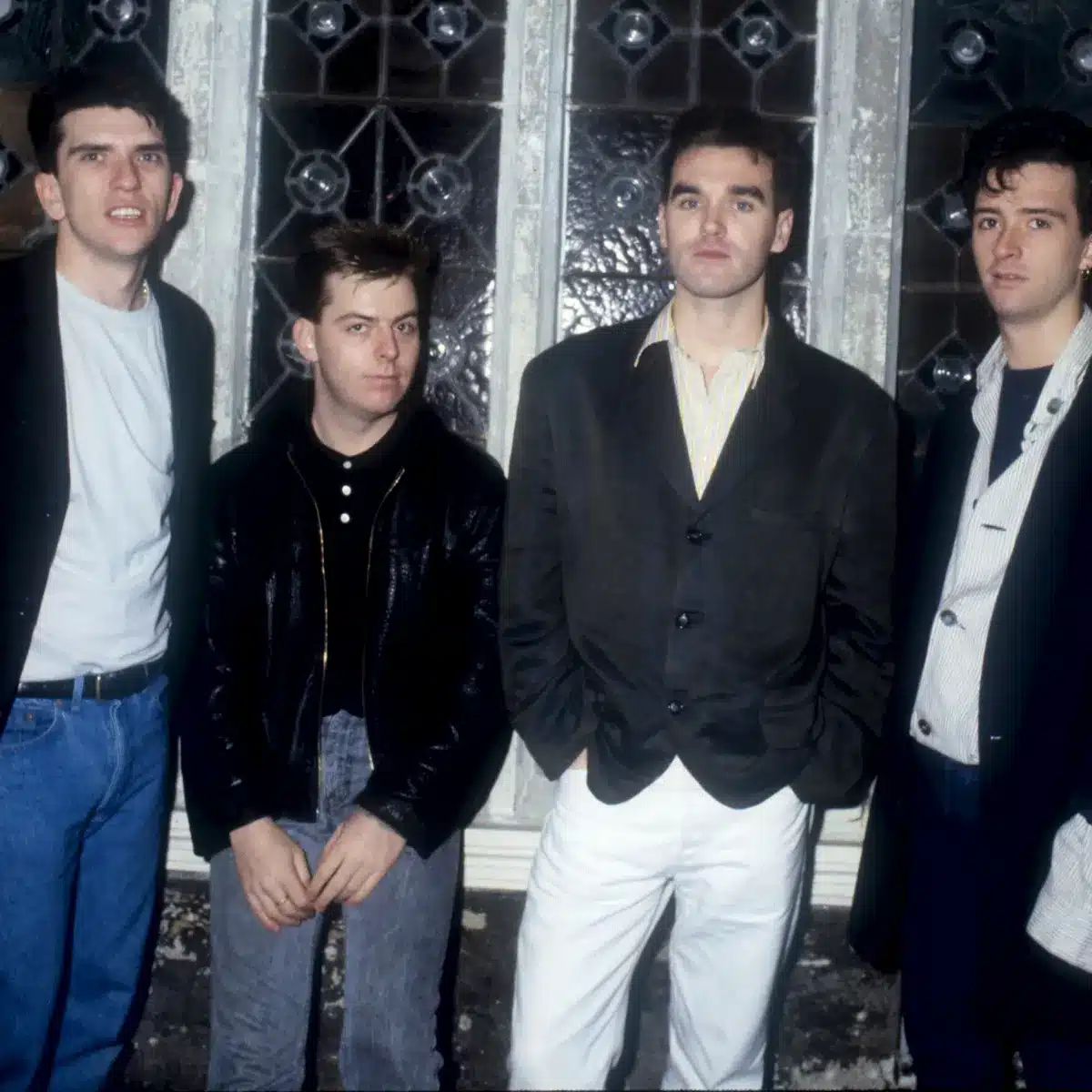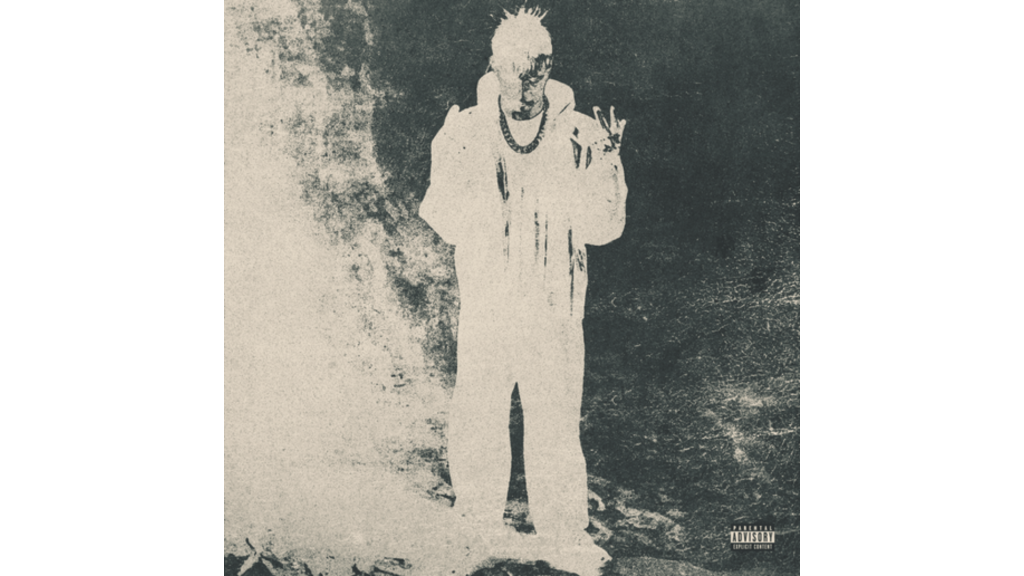The Smiths’ unique blend of introspective lyrics and jangly guitar melodies captivated a generation and left an indelible mark on alternative rock.
This article delves into the heart of The Smiths’ artistry, exploring how their brief but brilliant career shaped the sound of an era.
From Morrissey’s wit-laden vocals to Johnny Marr’s innovative guitar work, we’ll uncover the elements that made their music so compelling.
By examining their most iconic songs, their influence on contemporaries and future artists, and the lasting legacy they left behind, you’ll gain a deeper appreciation for The Smiths’ role in redefining popular music.
Join us as we peel back the layers of this legendary band’s enduring appeal.
The Smiths: A Brief History

Early Days and Formation
In 1982, Manchester witnessed the birth of a musical phenomenon that would redefine the post-punk and indie scenes.
The Smiths emerged from the creative partnership of guitarist Johnny Marr and vocalist Morrissey, two young musicians with a shared vision.
Bassist Andy Rourke and drummer Mike Joyce completed their lineup, forming a quartet that would soon become legendary.
Their early sound, shaped by the raw energy of punk rock and the reflective nature of post-punk, caught the attention of audiences and industry insiders.
Initial performances and demo recordings showcased a distinctive style that set them apart. Rough Trade Records recognized their potential, offering a contract that launched their career.
Rise to Prominence in the 1980s
The Smiths’ ascent in the 1980s was meteoric. Their self-titled debut album in 1984 struck a chord, reaching number two on the UK Albums Chart.
Subsequent albums like “Meat Is Murder” (1985), “The Queen Is Dead” (1986), and “Strangeways , Here We Come” (1987) solidified their status as musical icons.
These records showcased the band’s evolution, with Morrissey’s introspective and often wry lyrics perfectly complemented by Marr’s distinctive jangly guitar style.
Regular features on John Peel’s BBC Radio 1 show helped build a substantial following, ensuring their place as one of the decade’s most influential acts.
Controversies and Critical Reception
Internal conflicts, particularly between Morrissey and Marr, ultimately led to the band’s breakup in 1987, leaving fans and critics alike wondering what might have been had they continued.
Despite these controversies, The Smiths’ critical reception was overwhelmingly positive.
Music critics praised their innovative approach to songwriting, with Morrissey’s lyrical prowess and Marr’s inventive guitar work frequently singled out for commendation.
The band regularly appeared in ‘best of’ lists, and “The Queen Is Dead” is often cited as one of the greatest albums ever.
The Musical Genius of The Smiths

Johnny Marr’s Innovative Guitar Work
Johnny Marr’s guitar work formed the melodic backbone of The Smiths’ sound. His use of jangly, arpeggiated guitar lines, unusual tunings, and layering techniques created rich, textured arrangements.
Influenced by James Honeyman-Scott and George Harrison, Marr’s style blended rock, pop, and folk elements, evident in songs like “This Charming Man” and “How Soon Is Now?”.
This is exemplified in tracks like “The Headmaster Ritual” and “The Queen Is Dead,” where multiple guitar parts interweave to create a lush sonic tapestry.
Morrissey’s Unique Lyrical Style
Morrissey’s lyrics, characterized by wit, introspection, and social commentary, set The Smiths apart.
Known for literary references and wordplay, his passionate vocal delivery added depth to songs like “There Is a Light That Never Goes Out” and “Bigmouth Strikes Again.”
He also showcased his sharp social commentary with a touch of self-deprecating humor.
Andy Rourke’s Basslines and Mike Joyce’s Drumming
Andy Rourke’s melodic basslines and Mike Joyce’s versatile drumming were crucial to The Smiths’ sound.
Andy Rourke’s baseline playing was melodic and inventive, often countering Marr’s guitar work.
Rourke’s fluid, expressive style added depth and complexity to The Smiths’ music, exemplified in songs like “Barbarism Begins at Home” and “This Charming Man.”
Mike Joyce’s versatile playing style adapted seamlessly to The Smiths’ varied musical palette, from driving rock rhythms to more nuanced, subtle beats.
His work on tracks like “The Queen Is Dead” and “The Headmaster Ritual” demonstrates his ability to enhance the mood and energy of a song through his percussion.
Synergy Between Band Members
The true genius of The Smiths lay not just in the individual talents of its members but in the remarkable synergy between them.
The chemistry between Marr, Morrissey, Rourke, and Joyce created a whole greater than the sum of its parts.
The Smiths’ collaborative approach set a new standard for band dynamics in the indie and alternative rock scenes.
Their ability to blend individual talents into a unified whole, creating music that was both complex and accessible, continues to inspire musicians and bands to this day.
Defining an Era: The Smiths’ Influence
Influence on the 1980s Music Scene
The Smiths emerged as a revolutionary force in the 1980s music landscape, introducing a fresh sound and ethos that stood in stark contrast to the prevailing trends of the era.
Their frequent appearances on influential music programs, particularly John Peel’s BBC Radio 1 show, further cemented their status as one of the most important bands of the decade.
They set a new standard for combining poetic, introspective lyrics with innovative guitar work, inspiring many contemporaries to explore deeper and more personal themes in their music.
Contributions to the Post-Punk and Indie Genres
The Smiths played a pivotal role in defining and popularising post-punk and indie music, setting the stage for future developments in these genres.
Building on the post-punk ethos of defiance and introspection, they integrated punk’s raw energy with a more melodic and reflective approach, creating a sound that was both accessible and profoundly meaningful.
These records showcased The Smiths’ ability to blend complex, socially conscious lyrics with inventive musicianship, setting a high bar for artistic expression within these genres.
Fashion and Cultural Impact
The Smiths’ influence extended far beyond music, leaving an indelible mark on fashion and broader cultural trends of the 1980s. The band played a significant role in the rise of alternative and goth subcultures.
The Smiths became a rallying point for individuals seeking to express their individuality and nonconformity.
Their album covers and promotional photos often featured stark, artistic imagery that captured the band’s ethos and became instantly recognizable.
Morrissey’s habit of swinging gladioli during performances symbolized the band’s unique blend of masculinity and sensitivity, further cementing their status as cultural icons.
Influence on Contemporary Artists and Bands
Many prominent artists of the 1990s and beyond, including Blur, Oasis, and Radiohead, have cited The Smiths as a major influence on their work.
Newer bands frequently cover and reference their music, demonstrating its enduring relevance and appeal.
The reach of The Smiths’ influence spans multiple genres, from rock and indie to alternative and beyond.
Elements of their sound and lyrical style can be detected in the work of bands like The Strokes, Arctic Monkeys, and The National, among many others.
In essence, The Smiths’ influence on contemporary music is a testament to the timeless quality of their work.
Their ability to capture complex emotions and social commentary in accessible, melodic packages continues to resonate with new generations of musicians and listeners alike, ensuring their place as one of the most influential bands in the history of popular music.
Key Albums and Songs Of The Smiths

“The Smiths” (1984): Introduction to Their Sound
The Smiths’ self-titled debut album, released in 1984, was a groundbreaking introduction to their unique sound and quickly established them as a force to be reckoned with in the music industry.
This debut showcased the band’s distinctive style, characterized by Johnny Marr’s jangly, melodic guitar work and Morrissey’s introspective, often sardonic lyrics. The album blended rock and post-punk elements, creating a familiar and refreshingly new sound.
Key tracks from the album include “Hand in Glove,” the band’s debut single, which captured their raw, energetic sound and set the stage for their career.
“This Charming Man” became one of their defining songs, featuring Marr’s iconic guitar riff and Morrissey’s witty, ambiguous lyrics.
“Meat Is Murder” (1985): Political and Social Themes
The Smiths’ second studio album, “Meat Is Murder” (1985), marked a bold venture into more overt political and social commentary.
This album saw the band addressing issues such as animal rights, vegetarianism, and various social injustices, with the title track becoming an anthem for the animal rights movement.
Musically, “Meat Is Murder” showcased an evolution in The Smiths’ sound, featuring more complex arrangements and darker tones than their debut.
Key tracks from the album include “The Headmaster Ritual,” a scathing critique of the British education system that showcases Morrissey’s talent for blending personal experiences with broader social commentary.
“The Queen Is Dead” (1986): Critical Acclaim and Commercial Success
“The Queen Is Dead” (1986) is regarded as The Smiths’ masterpiece, earning critical acclaim and commercial success.
Frequently cited as one of the greatest albums of all time, it showcased the band at the height of their creative powers with polished production and ambitious songwriting.
Exploring themes of British identity, love, and despair, it featured standout tracks like “There Is a Light That Never Goes Out,” known for its lush instrumentation and poignant lyrics, and “Bigmouth Strikes Again,” with its energetic guitar work and biting lyrics.
Iconic Songs
Throughout their career, The Smiths produced several songs that have become iconic, transcending their era and continuing to influence music today.
“This Charming Man” is perhaps their most recognizable hit. It is known for its upbeat tempo, Marr’s jangly guitar work, and Morrissey’s witty, enigmatic lyrics. It has become a defining song not just for the band but for 1980s indie music as a whole.
“How Soon Is Now?” remains one of their most distinctive tracks, recognized for its innovative use of tremolo guitar and atmospheric production.
The song’s themes of loneliness and existential angst have resonated with listeners across generations, cementing its status as a classic of alternative rock.
The Controversial Figure of Morrissey
Early Life and Influences
Steven Patrick Morrissey, born on May 22, 1959, in Davyhulme, Manchester, emerged from humble beginnings to become one of British music’s most iconic and controversial figures.
From an early age, Morrissey developed a deep love for literature, particularly the works of Oscar Wilde and other romantic poets.
This literary influence would later manifest in his intricate, poetic lyrics and his penchant for dramatic, melancholy themes.
Morrissey pursued writing and music journalism before forming The Smiths with Johnny Marr in 1982.
When he finally stepped into the role of a musician, Morrissey’s reflective nature and literary influences became immediately evident, setting The Smiths apart from their contemporaries.
Lyrical Themes and Public Persona
Morrissey’s lyrics and public persona have been characterized by a potent mix of wit, introspection, and defiance of social norms.
His lyrical style is renowned for its poetic quality, often exploring themes of alienation, unrequited love, and biting societal critique.
In terms of his public persona, Morrissey cultivated an image that was both androgynous and theatrical, challenging traditional gender roles and societal norms.
His enigmatic and often controversial statements in interviews and public appearances only added to his mystique, making him a figure of admiration and criticism.
Political Views and Controversies
Morrissey’s outspoken political views and controversial statements have been a source of significant debate and criticism throughout his career.
Songs like “Bengali in Platforms” and various public statements on British politics have drawn sharp criticism from fans, media, and fellow artists alike.
Such controversies have significantly tarnished Morrissey’s reputation and led to a decline in his popularity within certain circles.
Relationship with Other Band Members
Morrissey’s relationships with his fellow band members in The Smiths were often strained, ultimately contributing to the band’s breakup in 1987.
Initially, Morrissey formed a strong creative partnership with guitarist Johnny Marr, resulting in The Smiths’ unique and influential sound.
However, tensions and conflicts within the band became increasingly apparent over time. Morrissey frequently clashed with Marr over creative differences and the band’s direction.
Known for his controlling nature and unwillingness to compromise, Morrissey’s behavior led to significant friction within the group.
The culmination of these personal and professional conflicts led to The Smiths’ breakup in 1987, five years after their formation. The Legacy of The Smiths
Lasting Impact on Music and Culture
The Smiths’ influence extends far beyond their brief active years, leaving an indelible mark on music and culture that resonates today.
Their unique blend of jangly guitars, introspective lyrics, and post-punk sound pioneered the indie music scene and influenced countless bands. Marr’s inventive guitar work and Morrissey’s poetic lyrics set a new standard in alternative rock.
Culturally, The Smiths challenged societal norms with their androgynous style and non-conformist attitudes. Morrissey’s flamboyant stage presence and rejection of traditional rock star machismo opened new possibilities for self-expression in popular music.
The band’s aesthetic, blending retro and modern elements, influenced fashion trends and subcultures. Morrissey’s swinging gladioli on stage symbolized their sensitivity and defiance.
Conclusion
In conclusion, The Smiths’ brief but brilliant career left an indelible mark on music history, redefining alternative rock and inspiring generations of artists.
Their unique blend of Morrissey’s introspective lyrics and Marr’s innovative guitar work created a sound that resonates with listeners today.
Despite controversies surrounding Morrissey’s outspoken views, The Smiths’ musical legacy remains undeniable. Their influence extends beyond music into fashion and culture, challenging societal norms and giving voice to those who felt alienated.
As we reflect on their impact, it’s clear that The Smiths were more than just a band; they were a cultural phenomenon that shaped an era.
Frequently Asked Questions (FAQs)
What Happened to The Lead Singer of The Smiths?
Morrissey, the lead singer of The Smiths, pursued a solo career after the band split in 1987 and remains active in music, though he is often surrounded by controversy.
What Makes the Smiths so Unique?
The Smiths are unique due to Johnny Marr’s innovative guitar work, Morrissey’s introspective lyrics, and a blend of jangly indie rock with post-punk influences.





















